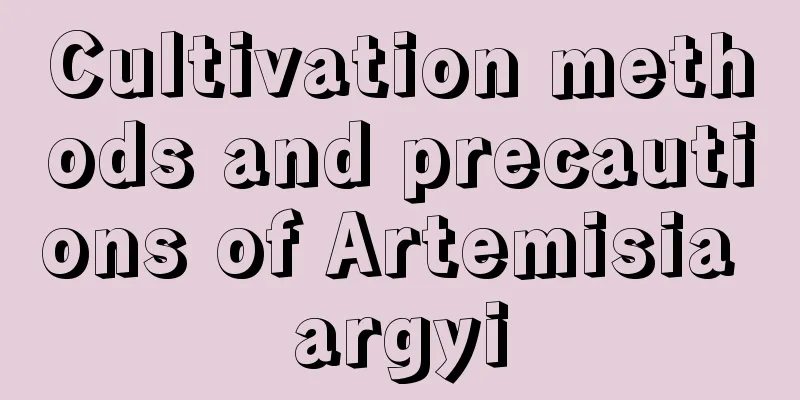The best formula for corn fertilizer

|
Special fertilizer for corn is a one-time fertilizer and does not require additional topdressing. In fact, no matter what fertilizer you choose, the ultimate goal is to increase yield. It depends on soil conditions. After all, soil conditions vary from place to place, and the nitrogen, phosphorus and potassium content are also different. Let’s talk about the best formula for special fertilizer for corn. 1. The best formula for corn fertilizer 1. Special fertilizer for corn (1) Corn fertilizer is a one-time fertilizer that does not require topdressing and is a long-lasting, stable, high-concentration corn-specific compound fertilizer. (2) Formula 1: 30-35 parts of ammonium chloride, 4.5-5.5 parts of ammonium sulfate, 20-22 parts of ammonium phosphate, 20-25 parts of urea, 1-1.5 parts of ammonium carbonate, 10-12 parts of potash fertilizer, and 6-7 parts of additives. (3) Formula 2: 60-70 parts of potassium nitrate, 30-50 parts of potassium dihydrogen phosphate, 70-100 parts of urea, 1-2 parts of 2,4-D, 1‑2 parts of 4-iodophenoxyacetic acid, 1‑2 parts of borax , 1‑2 parts of copper sulfate, 1‑2 parts of manganese sulfate, 1‑2 parts of zinc sulfate, 1‑2 parts of ammonium molybdate, and 1‑2 parts of ferrous sulfate. 2. Formula design of special fertilizer for corn (1) Nitrogen Generally, the amount of nitrogen fertilizer applied to summer corn is 8-10.7 kg/mu, the amount of nitrogen fertilizer applied to spring corn is 10-13.3 kg/mu, and the amount of nitrogen fertilizer applied to edible sweet corn is 6.7-9.3 kg/mu. (2) Phosphorus ① For early-maturing varieties of corn, the amount of phosphorus fertilizer applied is 3.3-5.3 kg/mu, and for late-maturing varieties of corn, the amount of phosphorus fertilizer applied is 4.7-8 kg/mu. ② If the phosphorus content in the soil is between 0.9-1.7 mg/kg, the amount of phosphorus fertilizer applied is 3.3-6.7 kg/mu (late-maturing varieties) or 2.3-5 kg/mu (early-maturing varieties). If the phosphorus content in the soil is between 1.8-3.2 mg/kg, the amount of phosphorus fertilizer applied is 3.3 kg (late-maturing varieties) or 2.3 kg/mu (early-maturing varieties). If the phosphorus content in the soil is greater than 3.2 mg/kg, no phosphorus fertilizer is required. (3) Potassium ① For early-maturing corn varieties, the amount of potassium fertilizer applied is 2.7-4.7 kg/mu, and for late-maturing corn varieties, the amount of potassium fertilizer applied is 3.3-6.7 kg/mu. ②If the potassium content in the soil is less than 5-6.6 mg/kg, the amount of potassium fertilizer applied is 2.3-4.7 kg (late-maturing varieties) or 1.7-3.3 kg/mu (early-maturing varieties). If the potassium content in the soil is greater than 6.6 mg/kg, potassium fertilizer is not required. (4) Calcium If the soil is acidic with a pH below 5, apply 133.3-200 kg of lime powder per acre. 2. Which is better, corn-specific fertilizer or compound fertilizer ? For corn, it is generally better to apply corn-specific fertilizer. The effective period of corn-specific fertilizer is very long (90-120 days). No topdressing is required during the growth period. It can be applied to the soil once as base fertilizer during sowing. While extending the effectiveness of the fertilizer, corn-specific fertilizers coordinate the needs of the crop with the progress of nutrient release from the fertilizer, ensuring that the nutrient needs of corn at each growth stage are met. The above is an introduction to the best formula for corn fertilizer. According to soil conditions and the fertilizer requirements of corn, you can scientifically mix nutrients such as nitrogen, phosphorus, potassium, and medium and trace elements to ensure the nutrient needs of corn at each growth stage.
|
<<: When to fertilize roses and what kind of fertilizer is best
>>: Things to note when changing the pot for roses, the best time to change the pot
Recommend
The main value of seven flowers
Ornamental value First of all, they are unique to...
These green plants are very common, but you put them in the wrong place
Aloe Vera Evergreen aloe vera has a certain effec...
The difference between lotus and pennywort
1. Different plant types Nasturtium is also known...
Planting Method and Cultivation Technology of Bupleurum
Bupleurum usually grows in mountainous and hilly ...
Can bamboo be planted in pots?
Can bamboo be potted? Bamboo can be planted in po...
Tea Tree Growth Conditions and Characteristics
Tea Tree Growing Conditions Tea trees prefer a wa...
How to graft jujube trees
Date tree grafting matters: time: The most suitab...
Will the blue stone lotus die after flowering?
When does blue stone lotus bloom? First of all, o...
Catnip cultivation methods and precautions
1. Choose potting soil Catnip has a good growth a...
What fertilizer is good for yew
1. What kind of fertilizer is good? Generally, co...
What to do if nasturtium root rots
Causes of nasturtium root rot Waterlogging As the...
Characteristics of sunflowers
1. Flowers We can see it in many places in China....
Can carambola trees be potted?
1. Can be potted Carambola trees can be grown in ...
Don’t buy nutrient soil. Here’s a tip: mix these 3 things together and they’re more effective than anything else for growing flowers!
The nutrient soils on the market now are said to ...
The efficacy and function of pineapple, how to eat pineapple
1. Efficacy and Function 1. Promote digestion: Pi...









